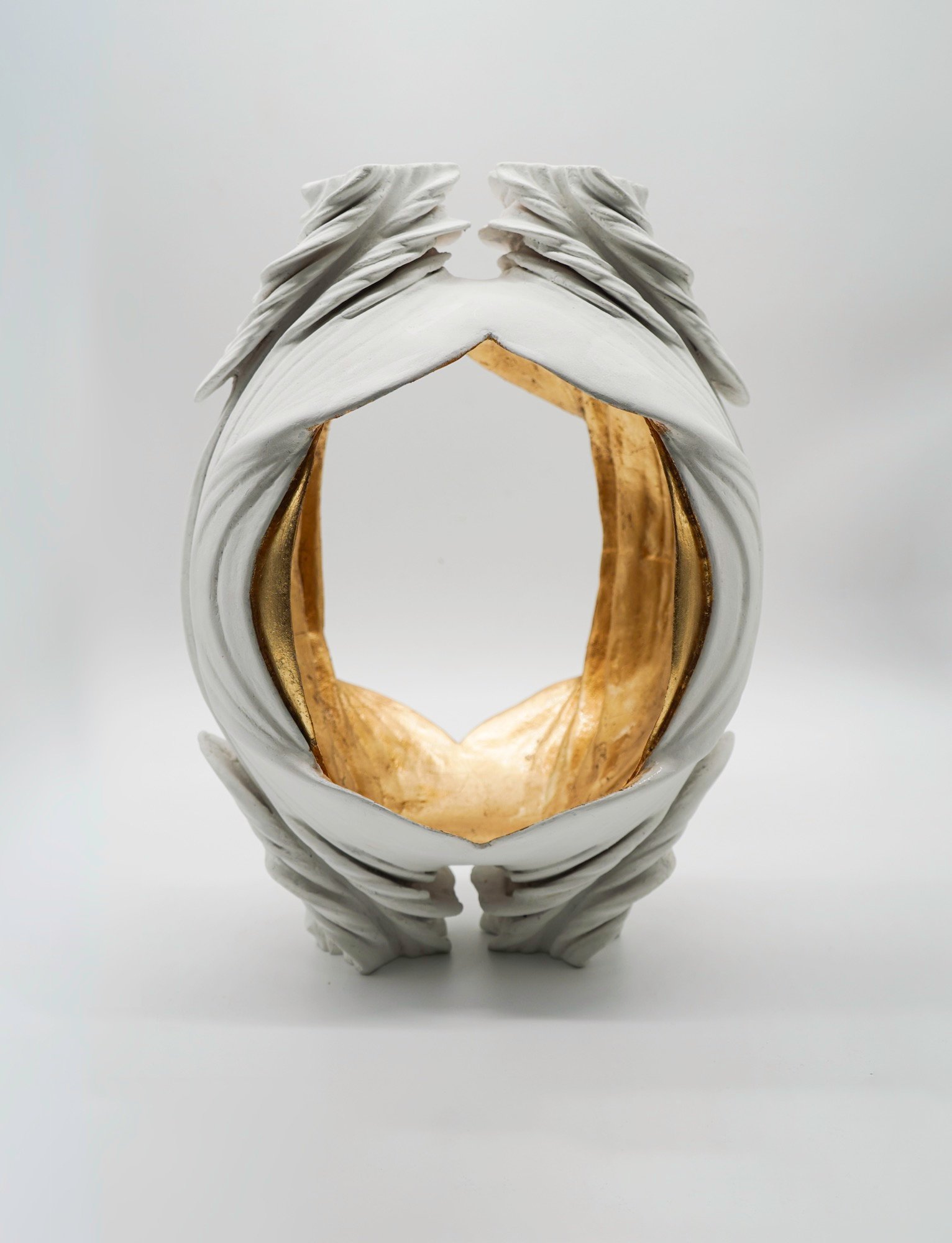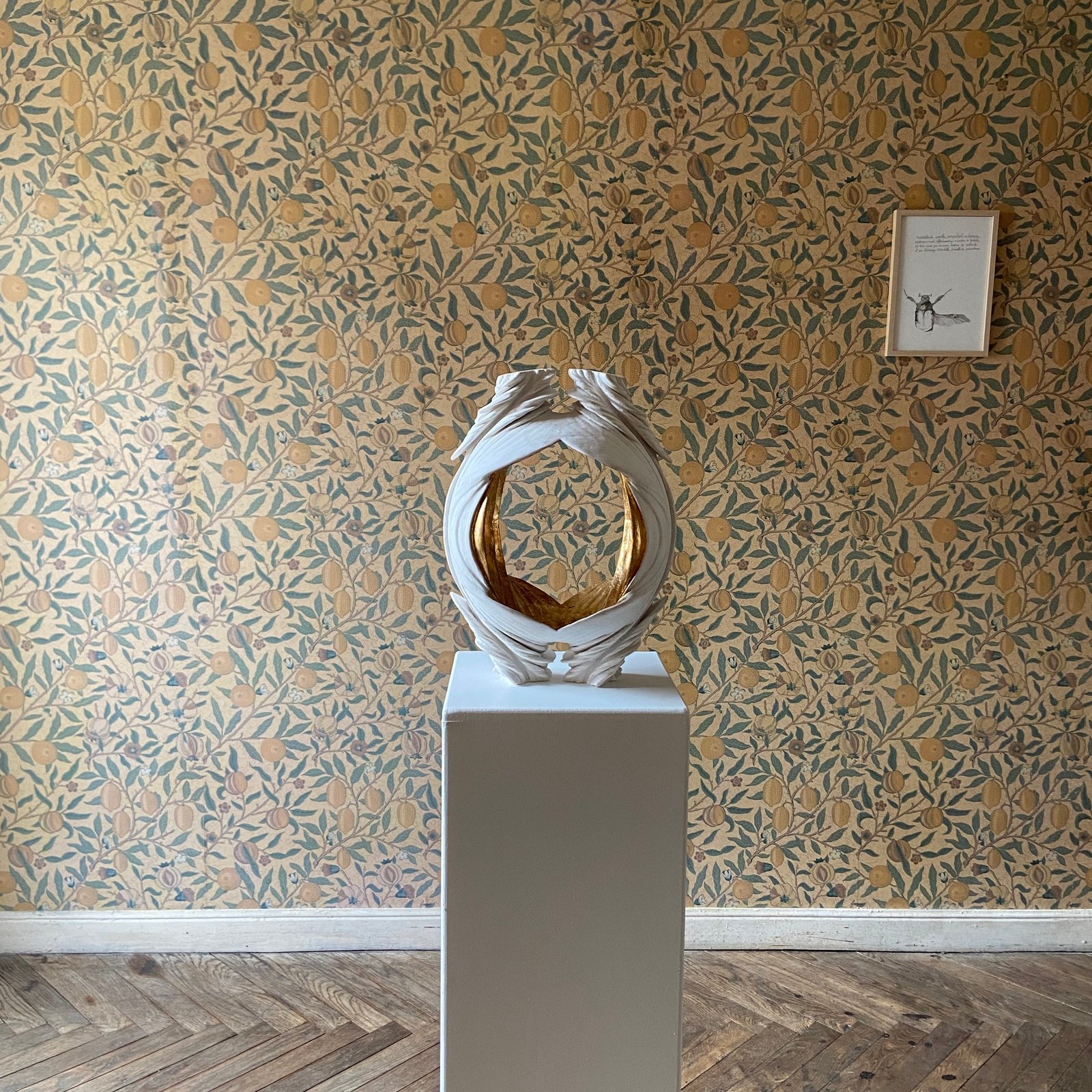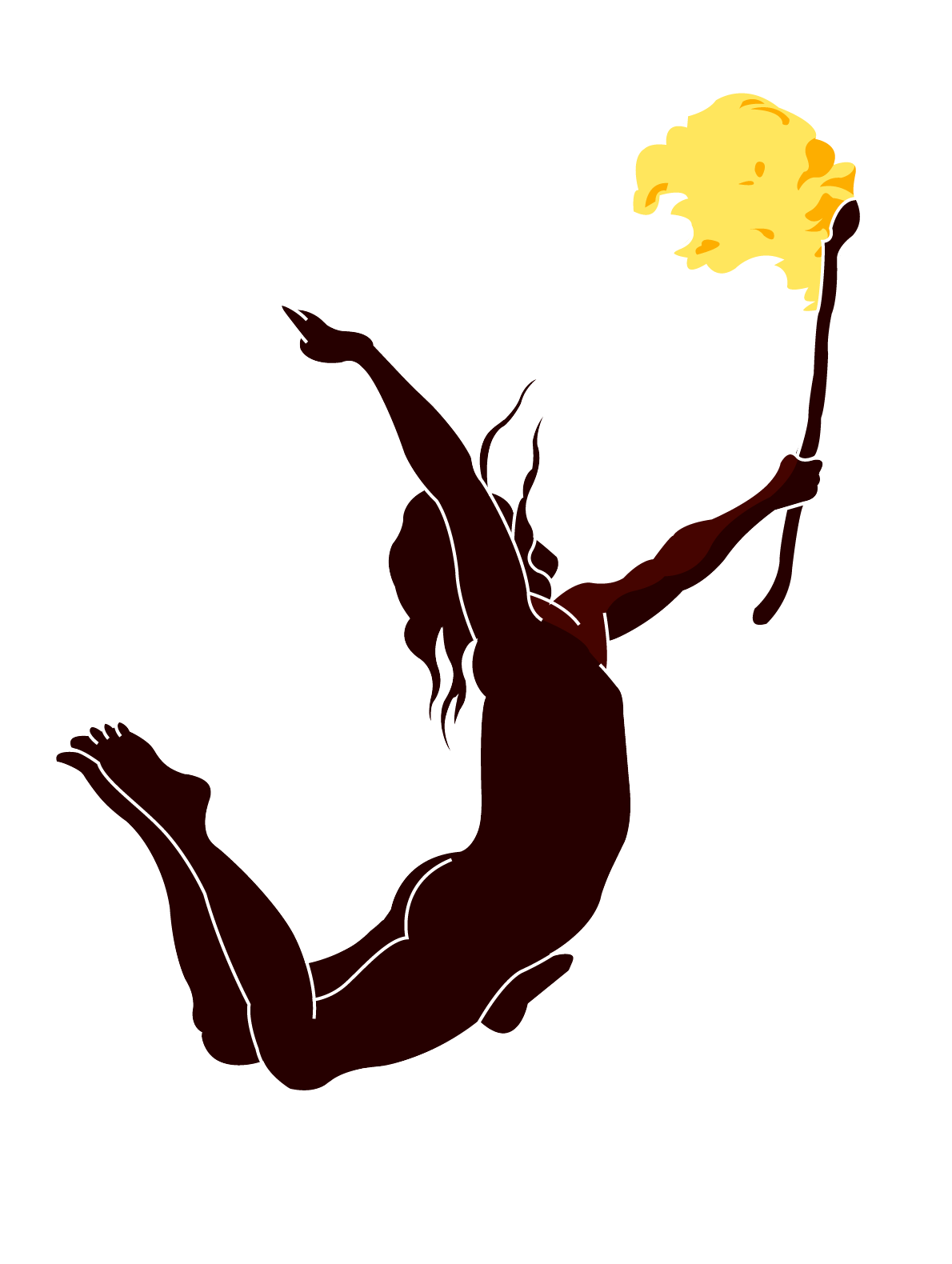Orée 2021 exhibition view – Villa Cameline – Collectif Palam

Born of the creative union of Aimée Fleury and Benoît Barbagli, Chrysalithes are the result of an ecological concern and a desire to pay tribute to nature. The disturbing discovery of three dead bees in their garden, victims of nearby pesticides, was the impetus for creating these unique sculptures. In memory of these bees, each sculpture has been named after a Greek goddess who is half-human, half-bee: Pausania, Rosanna and Antélia. These names symbolize not only the strength, beauty and duality of the goddesses, but also the vital importance and fragility of bees in our ecosystem.
The Chrysalith creation process is based on the linear modification of the parameters of a 2D fractal to transform it into an animation. These animations are then converted into a 3D mesh, materialized using a 3D printer. This “reasoned structure”, designed by Benoît, is then molded and cast in various materials such as plaster, concrete or acrylic resin.
With the “reasoned structure” comes Aimée Fleury’s “sensitive layout”, which sublimates these sculptures. Antelia and Rosanna feature gold-leafed interiors and white exteriors, while Pausania is distinguished by its gold-leafed exterior and pristine white interior. Each sculpture delicately incorporates a dead bee, merging perfectly with the structure as a tribute to these creatures and a reminder of nature’s fragility. The sculptures, often presented on a bed of soft feathers, are distinguished by their texture and visual appeal. In the words of Aimée Fleury, this “gentle art” takes care not only of the bees, but also of the viewer’s gaze and touch. The feathers, in contrast to the hardness of the materials used for the sculptures, evoke a softness and delicacy that invite contemplation and reflection. They create a meeting space between the work and the viewer, where sensibility and emotion can express themselves freely. Aimée Fleury’s “sensitive landscaping” reinforces the Chrysalithes’ ecological message and reminds us of the importance of caring for nature and all that inhabits it.
Chrysaliths seem to suggest that nature is written in a mathematical language. Although their design is based on complex mathematical principles, they exude an essence that seems natural and almost mystical. These works invite the viewer to recognize and care for the natural world around us, reminding us of the importance of preserving our environment.
The Chrysalithes have been presented in several monographic exhibitions. In 2021, they were highlighted in the exhibition
“Sous le chaos la vie
at the Galerie Mansart in Paris. In the same year, they were exhibited at the Villa Camélin in Nice for the exhibition
exhibition “Orée”.
. The Chrysaliths were presented again in 2022 at the Palazzo Saluzzo Paesana in Turin for the exhibition
“New Wave
. They were also exhibited at Galerie Eva Vautier in Nice for
“Tout autour de l’eau
at the end of 2022, and this exhibition continued into 2023.
Another work, Aqualithe, shares a common essence with the Chrysaliths. Both are created from the same fractal equations. While Chrysalithes unfold in sculptural forms inspired by goddesses and bees, Aqualithe manifests itself in columns.

Chrysalithe – Rosanna, 2021
Series, Chrysalithe
Co-created with Aimée Fleury
30 × 30 x 42 cm
Unique

Chrysalithe – Antelia, 2021
Series, Chrysalithe
Co-created with Aimée Fleury
30 × 30 x 42 cm
Unique

Chrysalithe – Pausania, 2021
Series, Chrysalithe
Co-created with Aimée Fleury
30 × 30 x 42 cm
Unique
